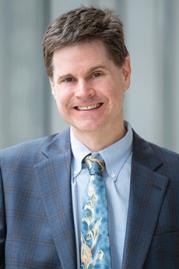
Matthew Kay is a Professor of Biomedical Engineering at George Washington University. Dr. Kay’s research team develops innovative technologies to study hypoxia, heart failure, and sleep apnea, with an emphasis on mitochondrial function, arrhythmia mechanisms, and recent emphasis in neurocardiology. His lab has specific expertise in high-speed optical assessments of organ level physiology, including optical mapping, time-resolved absorbance spectroscopy, and neurocardiac optogenetics. Panoramic optical mapping of membrane potential is used to study the spatiotemporal dynamics of arrhythmias. NADH imaging provides insight into mitochondrial metabolic fluctuations during myocardial ischemia and reperfusion. High-speed optical spectroscopy quantifies intracellular alterations of myoglobin oxygenation and mitochondrial redox state during high cardiac workloads and acute hypoxia.
Dr. Kay’s collaborative work is providing new insights into the relationship between cardiac ischemia, hypoxia, and workload, and their synergistic alteration of myocardial electrical activity and how that may cause arrhythmias. Other accomplishments of Dr. Kay’s team are in the control of the cardiac neuronal network using technologies that target specific populations of cells. Dr. Kay’s collaborative work in neurocardiology has demonstrated how specific expression of light activated channels (optogenetics) in the autonomic nerves of mice provides unparalleled spatiotemporal control of neurotransmitter release from cardiac neurons. Dr. Kay and his collaborators have also shown how increasing cardiac parasympathetic tone via viral expression of DREADDs (chemogenetics) in oxytocin secreting neurons of the hypothalamus improves cardiac function during myocardial infarction, heart failure, and sleep apnea. Each of these exciting accomplishments provides deeper insight into the development of new clinical devices and pharmaceutical therapies to prevent sudden cardiac death and to reduce the debilitating impact of sleep apnea and heart failure.
